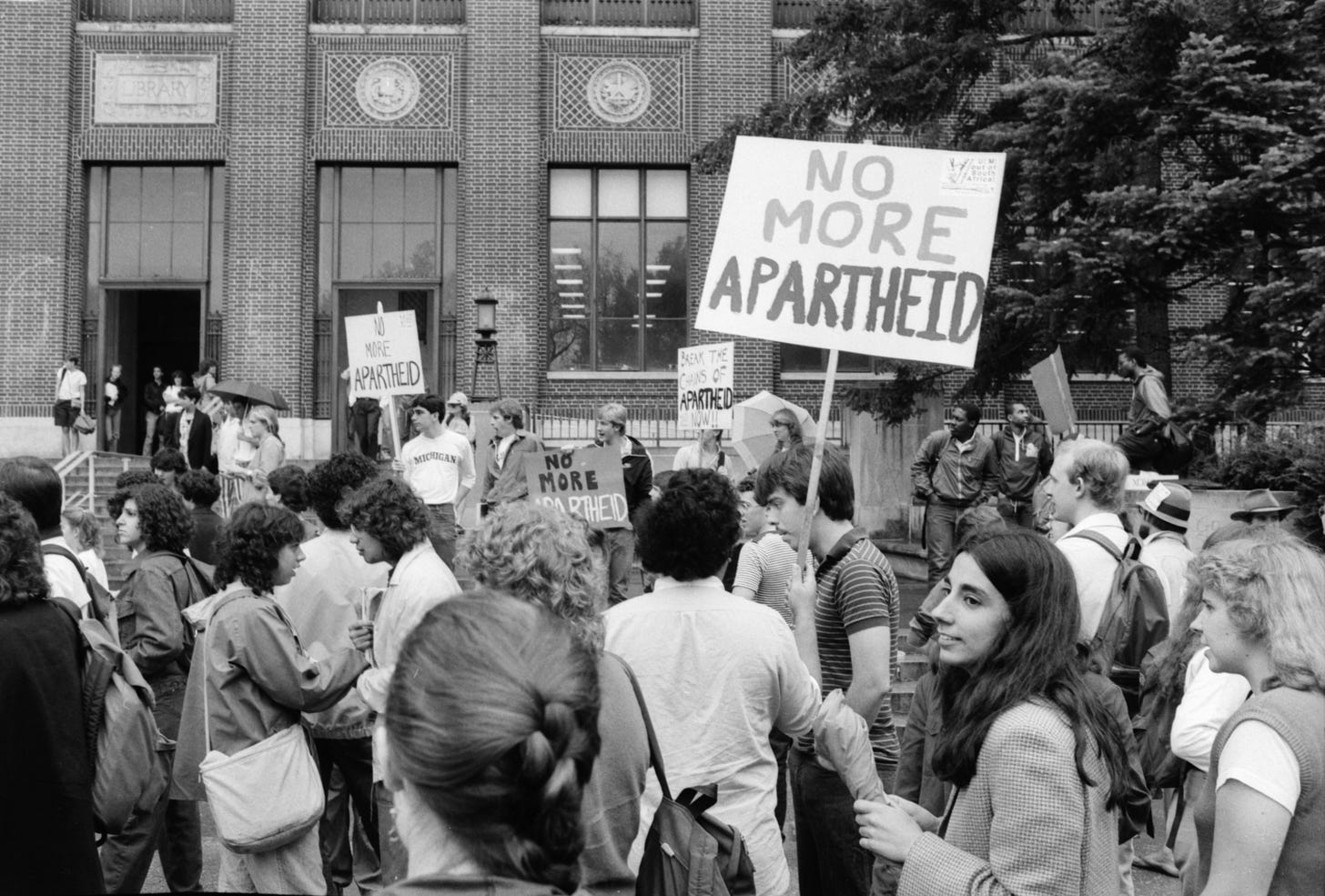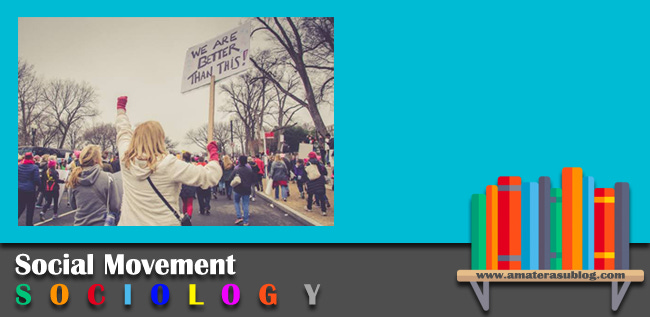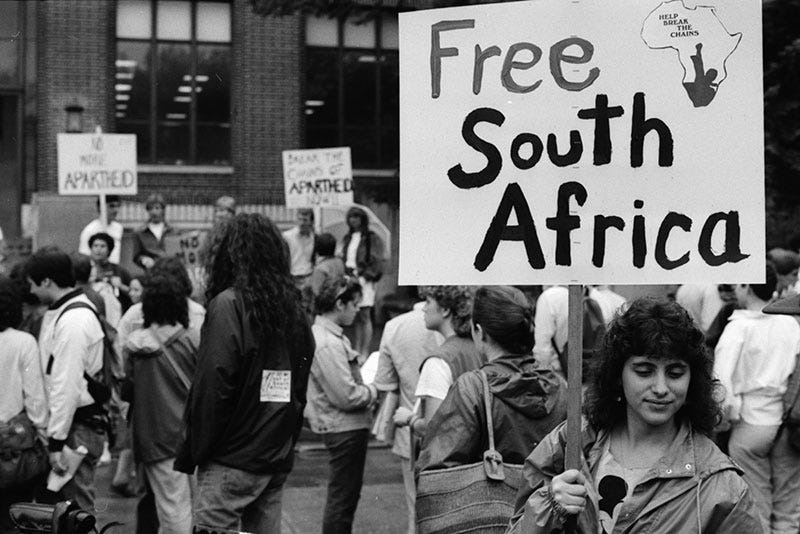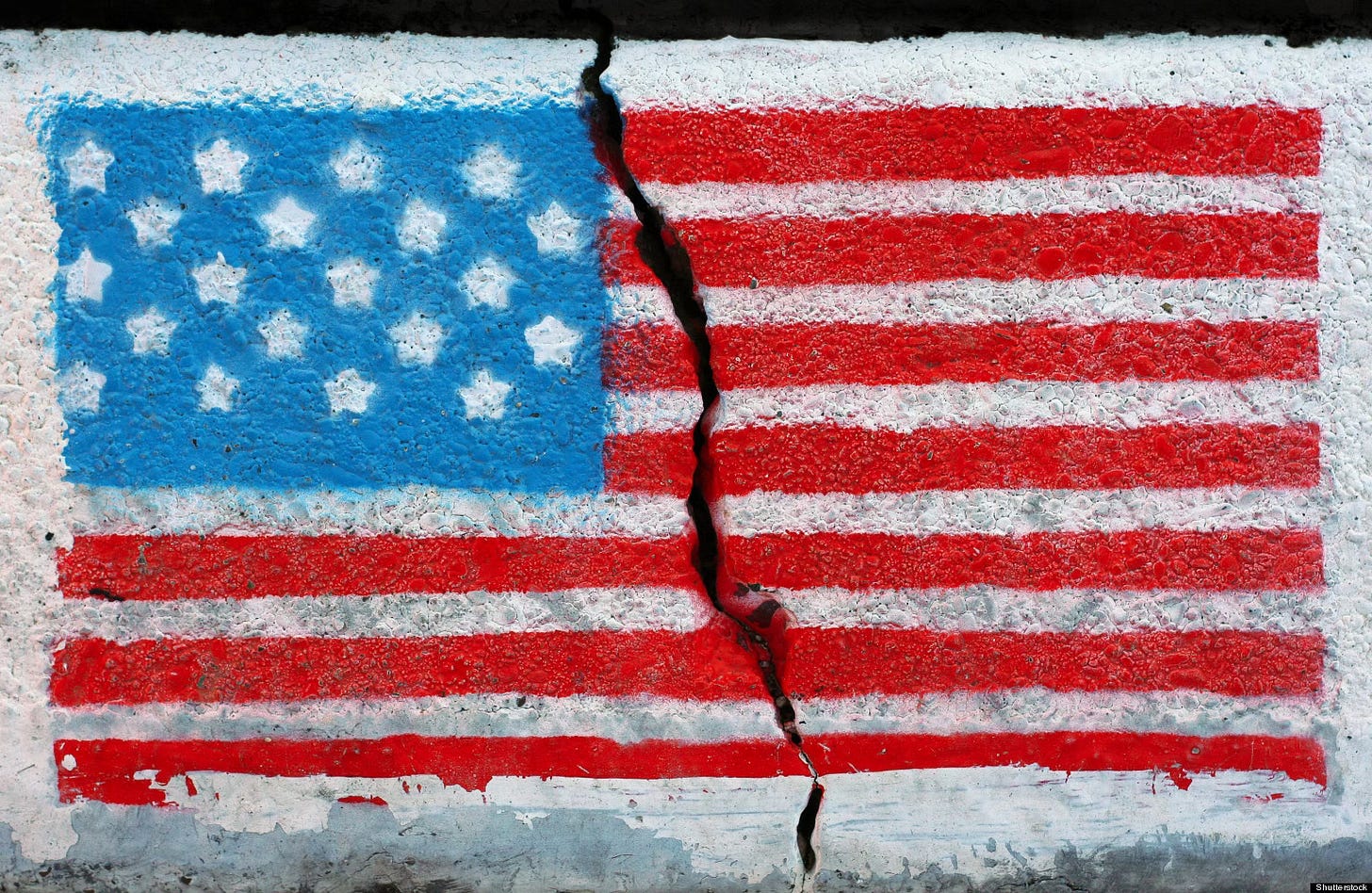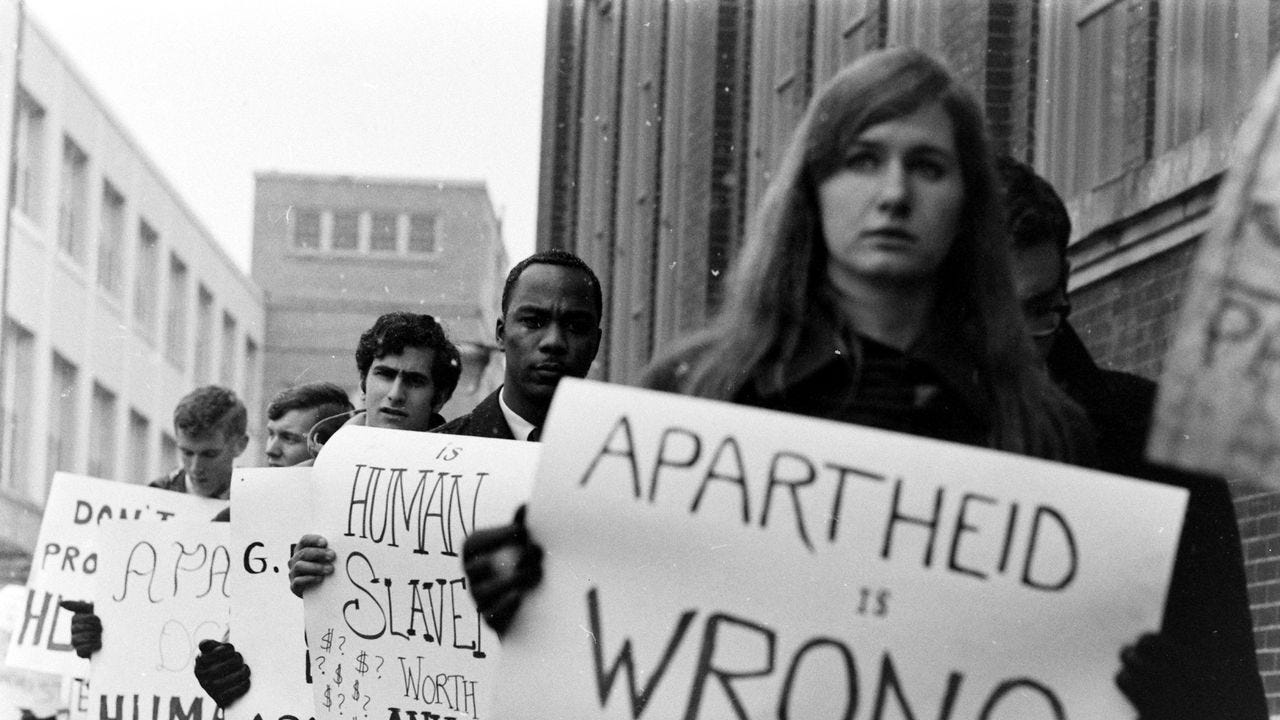By Bruce Watson
Forty years ago this week, on a brisk April morning, 100 students at Columbia University sat down on the steps of Hamilton Hall. Before authorities could stop them, several strapped chains across the building’s entrance. After four years of lobbying, marching, and even a hunger strike, the Coalition for a Free South Africa was determined to force Columbia to divest from apartheid.
No one expected much beyond arrests and maybe an administration promise to “study the issue.” But from trustees to student leaders, everyone was stunned by what happened next.
“I was hoping for fifty people, including the hard core,” one student recalled. “We would all get carted off, and whatever obstacles were blockading the door would be cut, removed, or thrown up. That’s what everyone was expecting. We would have a story written and the press would report that we had done this. Jesus Christ, what happened that day was absolutely mind boggling!”
By noon, 200 students occupied the steps. Within days, the number grew to a thousand. Support came from students around the country. Faculty, campus unions, and Harlem churches backed the occupation. The numbers grew.
In 1985, there was no social media. Strikers summoning friends to the steps had to use pay phones. And President Reagan, for all his bedrock conservatism, was not coercing universities to crack down on the slightest dissent. Yet throughout that April, Columbia students showed the world how to build a movement. Their success was so singular that it was soon studied.
Sociologist Eric Hirsch spent that summer interviewing Columbia students. In 1990 Hirsch published “Sacrifice For the Cause: Group Processes, Recruitment, and Commitment in a Student Social Movement” in the American Sociological Review. Hirsch asked a simple question. How did a small student protest grow into a sustained uprising? His article posed questions that could inspire today’s incipient uprisings.
Four Steps
Hirsch found four factors at work. The first was Consciousness Raising. “It is hard to see how any Columbia student could gain from the divestment of South Africa-related stock,” Hirsch wrote. But for weeks prior to the sit-in, the CFSA held teach-ins and “rap sessions” in dorms. And by April 4, students were hungry for that “something to do” that haunts us all these days.
Today, the news raises our consciences so high that we take this factor for granted. No need to tell us what’s at stake. But can activists gather momentum simply by reacting to the latest outrages? Wouldn’t a shared conscience, raised by teach-ins and talks focused on one or two specific issues, be more enduring, more powerful?
Step Two — Taking Risks
Hirsch’s second factor was more dramatic. Some call it “risk taking” but he preferred Collective Empowerment.
“The real test for the movement comes at the actual protest site,” Hirsch observed, “where all involved see how many are willing to take the risks associated with challenging authority.” The prolonged sit-in involved hardship. Sleeping on stone steps. Risking arrest and possible expulsion. Such sacrifice, Hirsch learned, breeds collective commitment.
“It’s the self-sacrifice aspect of it that appealed to me, that really drew my attention,” one student said. “Just seeing that there were people who were willing to extend themselves and put their own asses on the line.”
And today? Rallies, postcards, calls to Congress engage us, but do they create the “bandwagon effect” that Hirsch saw at Columbia? Is this “resistance” or “protest?” Consider not just Columbia students in 1985, but hunger striking suffragettes, and the legions who faced fire hoses during the Civil Rights movement. Would they join us in holding signs? Draw your own conclusions.
Step Three
Hirsch’s third factor — Polarization — needs no introduction. As the sit-in entered its second week, the university singled out striking students as “disruptive,” an isolated band not speaking for the rest of the student body. When that didn’t work, students were threatened with expulsion. And by the strike’s third week, numbers grew until some 2,000 students occupied the steps.
The threat of expulsion, one told Hirsch, “helped us bond together. It was stupid to do that because it just made people more furious, and it made people more resolved to stay.”
Today, polarization is the air we breathe. Red vs. Blue, MAGA vs. Dems. Steeped in polarization, do we take it, too, for granted? Our protests are mostly anti-, and the targets are all too familiar. Could we polarize better by saying less about THEM and more about us — what we stand for, how we differ from THEM? Remember “We are the 99 percent?”
Step Four
In recent decades, studies of other movements have cited other ingredients in their growth. Intersectionality. Social media. Varied tactics. But at Columbia, Eric Hirsch saw just one more — Democratic Participation.
Outside Hamilton Hall, protestors did more than sit. They held “open rap sessions” that lasted for hours. For every decision, one student remembered, “a serious attempt was made to reach consensus among all those on the steps.”
Feeling heard, respected, students stayed on. Even if decisions did not go their way, they had a voice. How about your group, your piece of this movement?
On April 25, after another long night punctuated by discussion and debate, “a very thoughtful and carefully planned decision was made,” one student recalled. “It was a question of what we could do that would be most effective for divestment.” That morning, the sit-in ended with a march to a Baptist church in Harlem.
Five months later, Columbia trustees voted to divest from South Africa.
Consciousness raising. Risk Taking. Polarization. Democratic Participation. No one at Columbia had a checklist of these four ingredients. But now you do. As we face the next four years, we have much to learn from 1985.
“Struggle is on a continuum,” wrote three veterans of the Columbia occupation. “Tactics are emulated, revised and molded into form for new struggles in new contexts.” But one student, interviewed during that long ago summer, defined April’s most important lesson.
“One thing I believe now is that people in a grassroots movement can actually have an impact, that we’re not all completely helpless.”



